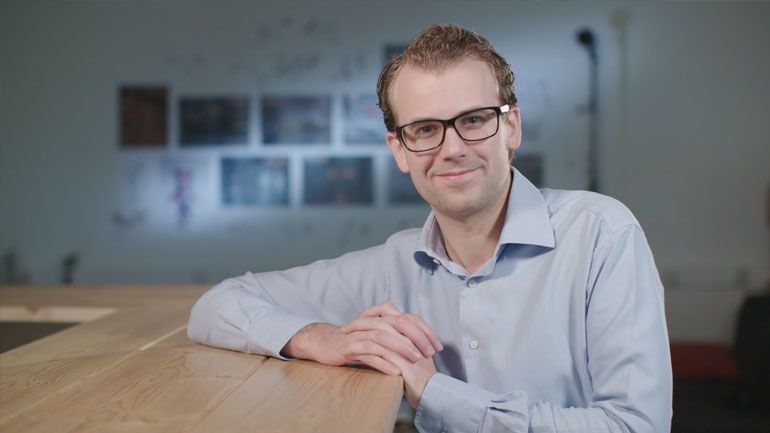Virtual reality (VR) was once considered an innovation, or even a gimmick, used primarily in the gaming industry. Yet its immersive functionality has caught the interest of a number of industries looking to train their staff more effectively.
Manus VR is one company that has seen a growing interest in the VR market. The Eindhoven-based start-up, founded by a group of friends and avid gamers, began developing a VR glove in 2014. Their objective? To change the way people interacted with technology.
“When we started, we found that hands are often neglected in this space. You need to look at what is needed and what is required to have that interaction with VR. And one of those aspects is reliable hand tracking,” said CEO and EY alumnus Stephan van den Brink.
Stephan and his co-founders set about creating a VR glove aimed at the consumer. Yet they soon realized their product had a dual purpose.
The value of hands-on training
“The point where we found that the consumer gaming market was not ready for our kind of device was when we actually looked at the pre-orders and the questions we got from customers,” Stephan recalled.
He was surprised that most of the interest came from industries who were interested in using the VR glove to improve their current working methods. So the team turned their attention to the business market and began working alongside companies to help improve the way they trained employees.
“It’s going to make a lot of things more efficient. If you train people in VR to do something, you have so much more control and you can imitate work environments really quickly,” says Stijn Stumpel, Manus VR’s lead designer.
Industries using VR for training
One obvious problem many companies face today is the limitation of training employees using 2D written or video material. In industries where real-life practical experience is essential, books and films just aren’t enough. Using VR gloves, people can use their hands just as intuitively as they can in real life.
The industries that are seeing a real benefit from the use of VR gloves and its technology are the manufacturing, industrial and medical sectors. By training their employees in VR to complete complex tasks and procedures, companies can save money, provide a safe training environment and refine processes.
“The automotive industry is very interested in VR technology because those companies have a high volume of very expensive products,” says Stephan. “So they are now integrating VR into factory lines, because there are still a lot of people working with their hands. In order to automate the process, it’s more efficient to do it in VR to see how much time it takes and how they can make it more efficient and productive.”

Another example is in the medical field. Doctors can use VR to learn new procedures and train with some of the world’s best surgeons. While the training is essential, the bi-product of having multiple doctors learn in VR is just as valuable – data.
“If you let 1,000 doctors perform heart surgery in VR, you can look at the data and you can find out what combination of movements is most efficient, most safe or most cost-effective. And that’s cool. That’s new,” says Stijn.
The potential of VR is limitless
Stephan believes the value of VR for training is limitless: “As the internet did with knowledge, the same thing can be done with VR regarding skills and experiences.”
What does this mean for industries going forward? For those early adopters of this technology, it means the ability to:
Create real-life training experiences for more employees
Refine processes
Create efficiencies – saving time and money
Provide a safe training environment
Enable quality data collection
Establish best practices
And in the next 5 to 10 years? For Stephan and Manus VR: “We envision that, in three years, we will have built up a sustainable company based on the current industries that we are helping. But in five years, I think we can really set a standard in how we interact with technology.”
Zdroj: https://betterworkingworld.ey.com/better-questions/training-virtual-world

